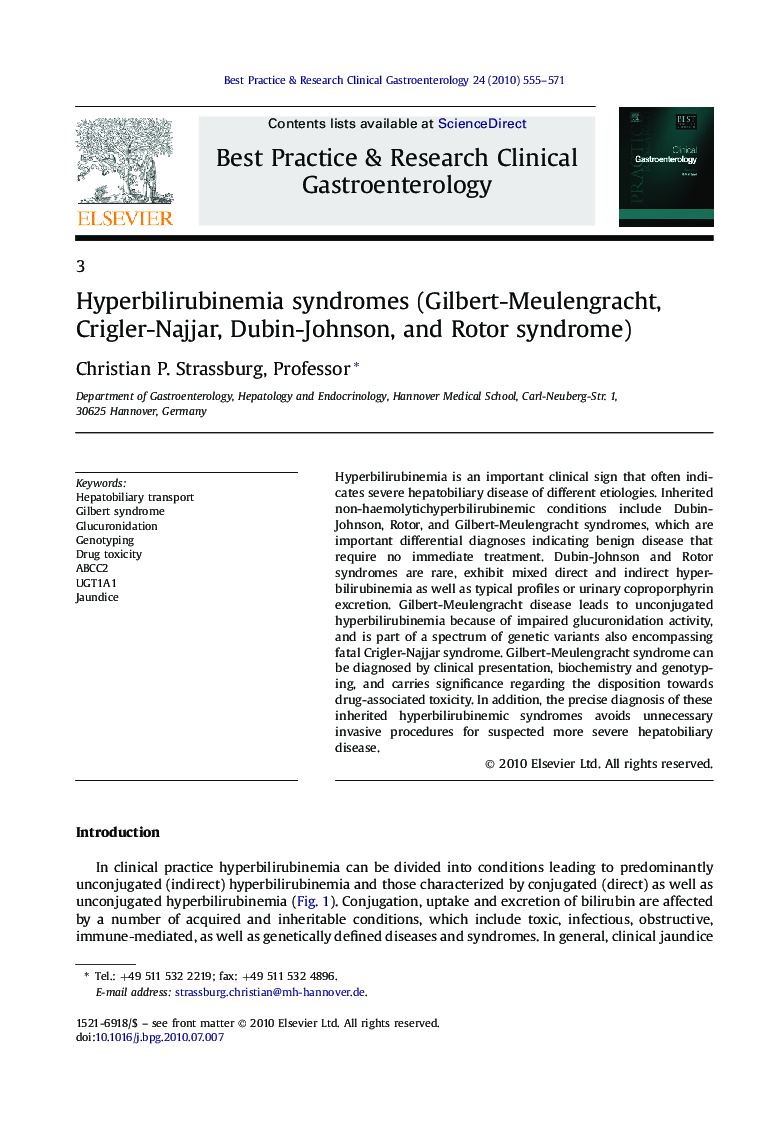| Article ID | Journal | Published Year | Pages | File Type |
|---|---|---|---|---|
| 3254284 | Best Practice & Research Clinical Gastroenterology | 2010 | 17 Pages |
Hyperbilirubinemia is an important clinical sign that often indicates severe hepatobiliary disease of different etiologies. Inherited non-haemolytichyperbilirubinemic conditions include Dubin-Johnson, Rotor, and Gilbert-Meulengracht syndromes, which are important differential diagnoses indicating benign disease that require no immediate treatment. Dubin-Johnson and Rotor syndromes are rare, exhibit mixed direct and indirect hyperbilirubinemia as well as typical profiles or urinary coproporphyrin excretion. Gilbert-Meulengracht disease leads to unconjugated hyperbilirubinemia because of impaired glucuronidation activity, and is part of a spectrum of genetic variants also encompassing fatal Crigler-Najjar syndrome. Gilbert-Meulengracht syndrome can be diagnosed by clinical presentation, biochemistry and genotyping, and carries significance regarding the disposition towards drug-associated toxicity. In addition, the precise diagnosis of these inherited hyperbilirubinemic syndromes avoids unnecessary invasive procedures for suspected more severe hepatobiliary disease.
